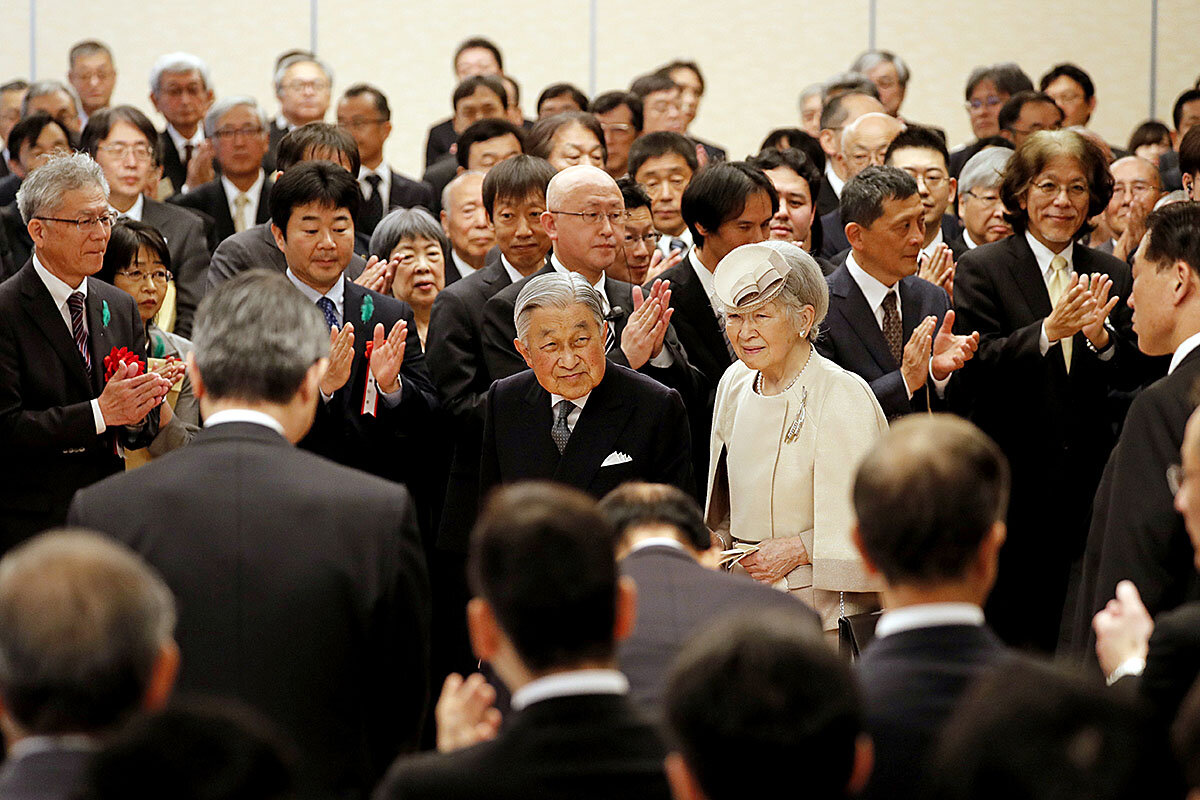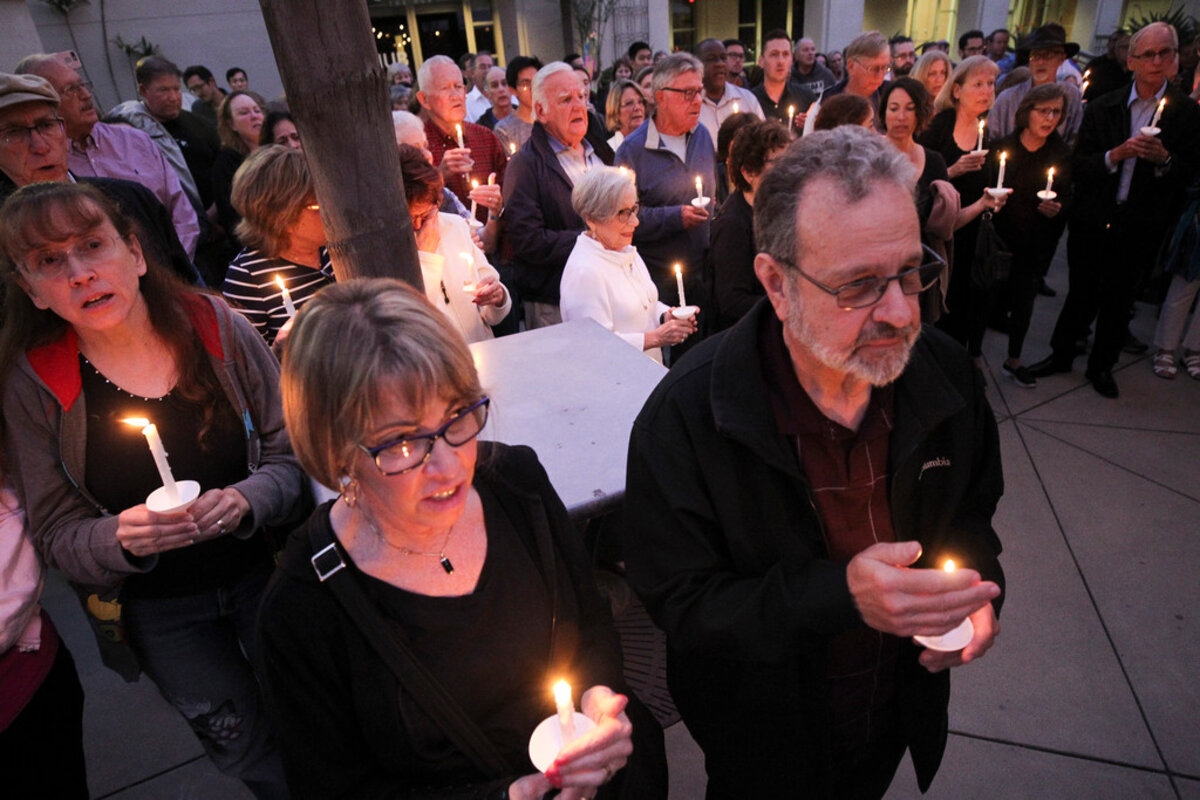The sudden success of an ultranationalist party in Spain reflects voter concerns over identity and the flow of immigrants from Africa.
Monitor Daily Podcast
- Follow us:
- Apple Podcasts
- Spotify
- RSS Feed
- Download
 David Clark Scott
David Clark Scott
The Poway, California, synagogue shooting this past weekend paints yet another vivid portrait of hate and violence. Sri Lanka. New Zealand. Pittsburgh. In each, scared young men believing that power lies in violence lashed out at a house of worship.
In the newsroom today, Monitor editors considered the underlying causes. Are such attacks the modern day equivalent of a pogrom? Is this the manifestation of white nationalists’ fear of declining influence? Is this a byproduct of populism? After the New Zealand mosque shooting, the Monitor’s Harry Bruinius wrote about how the faithful worship in “the midst of seeming nihilistic hatred.”
But in every case, these attacks produce enduring portraits of defiance, self-sacrifice, and unity.
Moments after Saturday’s attack, Rabbi Yisroel Goldstein stood on a chair, his wounded hand wrapped in a prayer shawl. “Terrorism like this will not take us down,” he told his congregation.
The lone fatality was an act of selflessness. Lori Gilbert-Kaye died stepping between the gunman and Rabbi Goldstein. Almog Peretz was wounded while shepherding children out of harm’s way. A US Army vet ran toward the shooter and chased him into the street.
Later, Rabbi Goldstein asked for all to respond to the attacks with light, with acts of kindness. “I pray for the healing during this time, for the pain and grief, and I ask the world to do something to add more light to combat evil darkness,” he said.
“A little bit of light pushes away a lot of darkness,” he told CNN from his hospital bed.
Now to our five selected stories, including why U.S. offshore drilling faces bipartisan opposition, why the end of an imperial era spurs new beginnings in Japan, and how military vets are finding fulfillment in farming.












